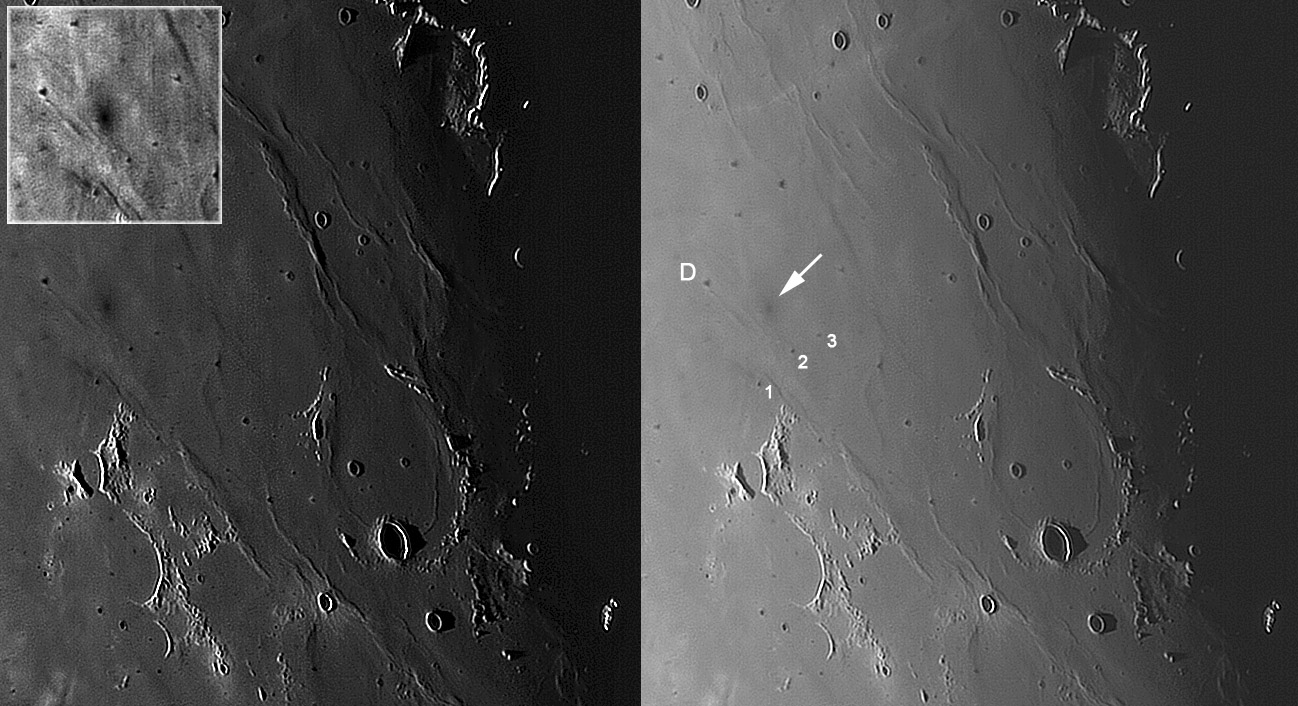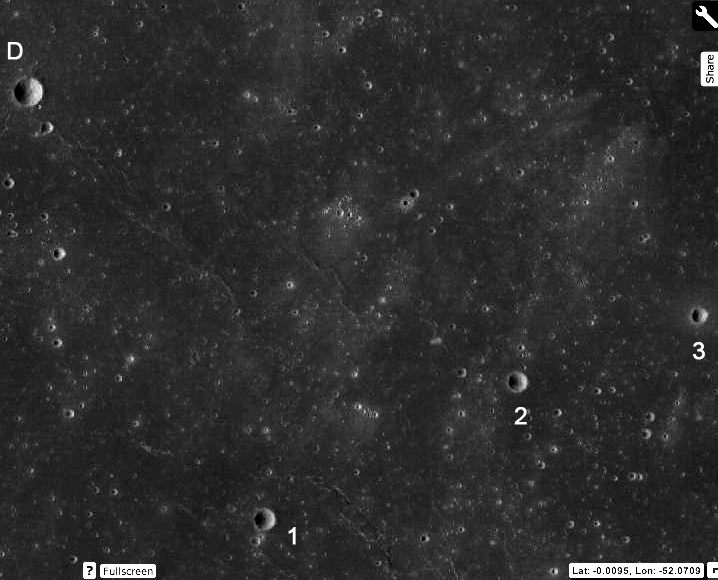September 25, 2023
Splotchy Artifact?
Originally published September 10, 2013

images above by Maximilian Teodorescu, Romania; image below left from LRO QuickMap
 |
While putting together a large mosaic of the recent waning crescent Max noticed an odd dark splotch with a facing bright area (arrowed above). He suggested that it might be a shallow crater because it lacked the shadow-filled sharpness of nearby craters (that I have labelled 1, 2, 3 and D for Hermann D). The broad feature Max suggests could be a crater is not foreshortened as others are nearby so I don't think it is a crater. When I looked at his image of this southern part of Oceanus Procellarum - see the Flamsteed ring to the right - I saw the dark fuzziness and immediately thought Max's image must be a negative, reversing brights and darks. But its not, both are normal images (with two different degrees of processing) crossed by bright rays and shadows are black. So the dark splotch is not a nimbus of brightness marking a bright young crater. Looking at a strongly contrast enhanced LRO image of the same area (left) the dark splotch seems to correspond to a small cluster of secondary craters in the middle of a faint bright spot. Neither the Lunar Orbiter IV image nor other telescopic ones show a dark splotch. Possible explanations are that it is a defect or artifact in the image, or conceivably a new feature. I am embarassed to even suggest the latter. At least two older images don't show it, if ones taken after Sept 1 don't either than we can confidently say it is an imaging artifact. If by chance other recent images do show it then it is a more interesting mystery.
|
Yesterday's LPOD: Setting Standards
Tomorrow's LPOD: A Hearth in the Triade
COMMENTS?
Register, Log in, and join in the comments.



